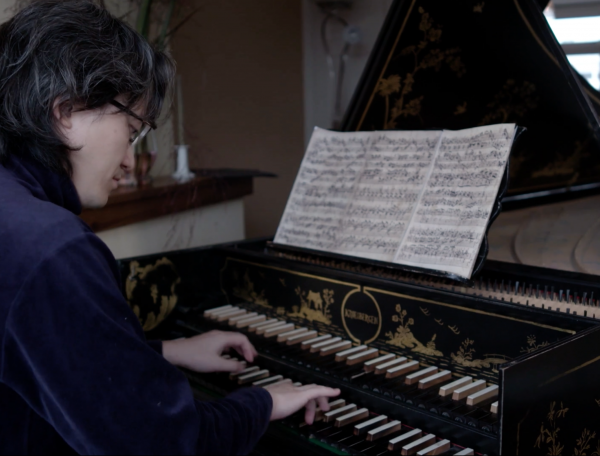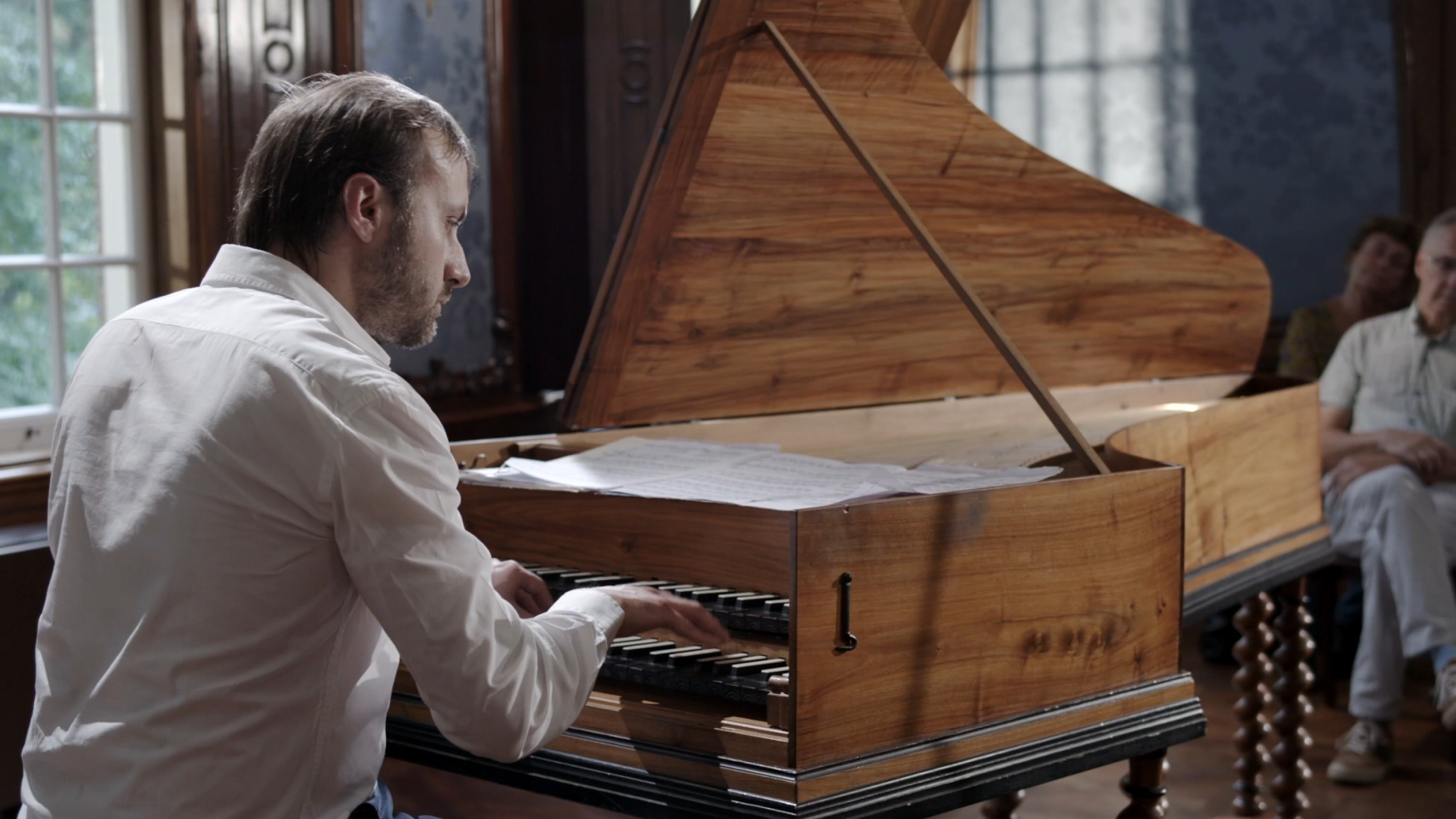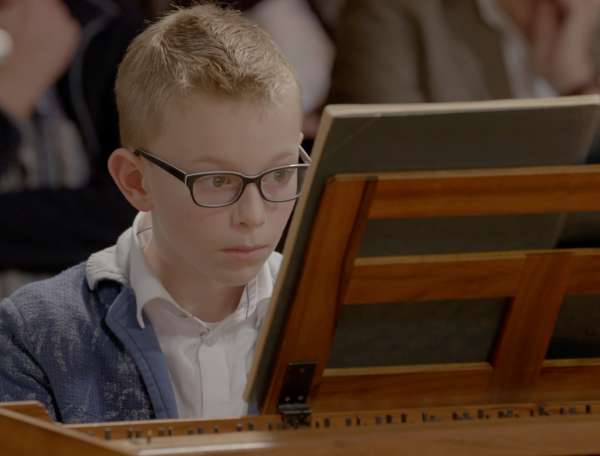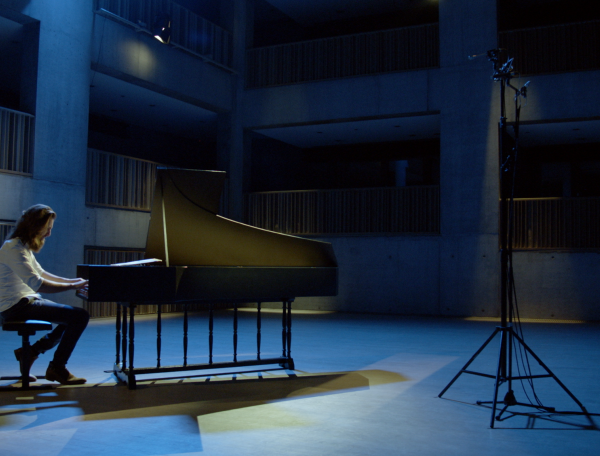

Fantasia in G minor
BWV 917 performed by Bertrand Cuiller
at the Bartolotti House, Amsterdam
Behind the music
Well-thought-out polyphony
Bach sticks to the old, contrapuntally elaborate variant
In the seventeenth century, the term fantasia referred mainly to the free nature of a text or a set melody. But the compositions often kept to the strict rules of counterpoint. It was only later that the term was also used for compositions of a more semi-improvised character. In this fantasia, Bach sticks to the old, contrapuntally elaborate variant. This is also suggested by the scholarly Latin title that is found in some manuscripts: Fantasia duobus subiectis.
Bach wrote this Fantasia in his younger years, when he was still very much under the influence of the seventeenth-century keyboard tradition. Incidentally, the Latin title refers to two themes, although the composition has three. Bach may have been referring to two counter-themes, which are thus added to the main theme, which is not referred to in the title.
The short, passionate introduction is slightly reminiscent of a toccata, and is followed by the well-thought-out polyphony. The three themes are very different and are all heard right from the beginning. It is also a model of reversible counterpoint, meaning that the themes can be ‘stacked’ in various ways. The theme that is first heard in the top part can also become the bass, for example, or a middle part. It is probably an exercise in composition, says Bertrand Cuiller. Or it could also be a prelude to a work that has been lost. It is difficult to explain it as a free-standing work.
The Bartolotti House
We made this recording at The Bartolotti House, at Herengracht 170 and 172. The house at the back of no. 170 was occupied by harpsichordist, organist and conductor Gustav Leonhardt from 1974 to his death in 2012.
Leonhardt was one of the pioneers of early music in the Netherlands. As a teacher and performer, he was a source of inspiration to many harpsichord players around the world.
It is one of the most impressive buildings in the old centre of Amsterdam. It was built around 1620 as a residence, on commission from the wealthy businessman Willem van den Heuvel, who had inherited a lot of money from a childless uncle by marriage, called Giovanni Battista Bartolotti, who came from Bologna. The Dutch Renaissance-style design was probably done by the Amsterdam city architect Hendrick de Keyser. Over the centuries, the house has been split up and has undergone several modernisations. You can still see many wonderful historical decorative features from the various renovations. The two parts of the Bartolotti House came into the possession of Vereniging Hendrick de Keyser, which now has its office there.
- BWV
- 917
- Title
- Fantasia in G minor
- Epithet
- Fantasia duobus subiectis
- Instrument
- harpsichord
- Genre
- harpsichord works
- Year
- before 1708
- City
- Arnstadt
Extra videos
Vocal texts
Original
Translation
Credits
-
- Release date
- 2 March 2018
-
- Recording date
- 27 May 2017
-
- Location
- Bartolotti House, Amsterdam
-
- Harpsichordist
- Bertrand Cuiller
-
- Harpsichord
- Bruce Kennedy, 1989 after Michael Mietke
-
- Director and interview
- Gijs Besseling
-
- Music recording
- Guido Tichelman, Pim van der Lee
-
- Muziekmontage en -mix
- Guido Tichelman
-
- Camera and lights
- Danny Noordanus
-
- Data handling
- Eline Eestermans
-
- Interview
- Jan Van den Bossche
-
- Producer
- Jessie Verbrugh, Marco Meijdam
-
- Met dank aan
- Vereniging Hendrick de Keyser
Discover
Help us to complete All of Bach
There are still many recordings to be made before the whole of Bach’s oeuvre is online. And we can’t complete the task without the financial support of our patrons. Please help us to complete the musical heritage of Bach, by supporting us with a donation!

